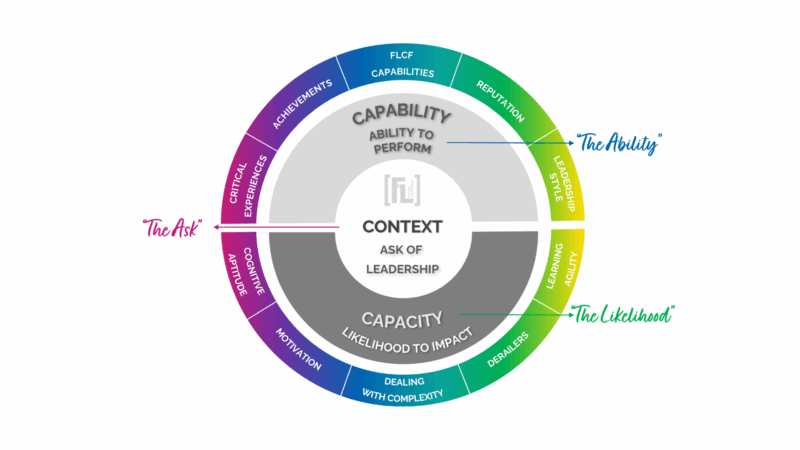
Leadership Diversity and Health Outcomes: A Systems Approach to Equity
As a health sector specialist working within one of Australia’s most dynamic healthcare environments, I have seen what happens when we hire for fit alone without serious consideration of hiring for flex. There is a balance to be struck, and the true magic of executive search comes alive when we unlock the transformative power of diverse leadership to drive better health outcomes for all.
Let’s start by taking a look at the clear evidence, moving beyond correlation to causation. The correlation between leadership diversity and patient outcomes is not just compelling, it’s critical. Health leaders hold accountability for building diverse and inclusive teams, in order to build resilient, equitable healthcare systems that truly serve their communities.
My exploration of recent research demonstrates that engaging diversity meaningfully through inclusive leadership, embracing talent across hierarchies, and engaging different perspectives enables healthcare workers of all kinds to feel they can speak up and participate, which in turn, can save lives. DEI in health is beyond an ethical imperative; it’s a clinical necessity.
In multiple studies of quality in cardiovascular care, top performing hospitals have been shown to have the capacity to embrace staff across hierarchies and engage differences so that healthcare workers of all kinds feel they can participate meaningfully in improvement efforts.
In the two-year, longitudinal Leadership Saves Lives study of 10 hospitals, DEI initiatives impacted the ability to adopt a culture of improvement rather than blame, which was linked to significant reductions in risk-standardised mortality rates. This research underscores that inclusion in leadership isn’t just about fairness, it’s about clinical excellence and patient safety.
A study by the National Academy of Medicine found that racially and ethnically concordant care results in greater patient satisfaction and better health outcomes. When patients see themselves reflected in their care teams and leadership structures, trust increases, communication improves, and clinical outcomes follow suit.
NSW Health: A Systems Approach
NSW Health is the largest public health system in Australia with over 146,000 staff across the state who come from a diverse range of backgrounds. The organisation exemplifies a future-facing systems approach to diversity and inclusion, and indeed the communities in which Local Health Districts serves, are some of the largest and most diverse in Australia.
The systems approach recognises that diversity must be embedded at every level, from boardrooms to bedside care. The NSW Aboriginal Health Plan, for example, is grounded in deep Aboriginal knowledge about caring for Country and community. Systemic reform is being led by Aboriginal voices, with the government working closely in partnership with Aboriginal-controlled organisations and local communities. The reform demonstrates how diverse leadership perspectives can address complex challenges like health equity, social attitudes, and environmental sustainability, simultaneously.
More broadly, NSW Health aims to reflect the community that it serves, which means that it can treat all patients and clients with respect, understanding and compassion. This integration is evident in NSW Health’s comprehensive workforce planning, which takes account of existing health disparities and encourages diverse leaders to bring different perspectives to policy development. Leadership diversity drives organisational culture change in measurable ways. The guiding coalitions in six of the 10 hospitals that were most successful in the Leadership Saves Lives study were distinguished in three ways:
- including staff from different disciplines and levels in the organisational hierarchy
- encouraging authentic participation by the members
- and, using constructive patterns of managing conflict.
Community Engagement Through Representative Leadership
Globally, healthcare organisations are recognising the imperative of representation today. Modern Healthcare’s 2024 Diversity Leaders List honours individuals and organisations who are working to address the deep divides that exist in patient outcomes and access. These leaders understand that when diverse ideas are introduced, creativity flourishes. Leaders from various backgrounds often challenge conventional thinking, sparking problem recognition and innovative solutions.
Research has shown that racial and ethnic minorities often report lower satisfaction with their care experiences compared to white patients. This disconnect between hospitals and the patients they serve can present a cultural gulf that must be overcome if the healthcare industry is to transition to value-based, patient-centred care.
NSW Health’s approach to community engagement demonstrates this principle in action. The organisation’s programs, such as the Employ-my-ability program has achieved an 89% job placement rate for trainees with significant intellectual disability, illustrating how inclusive leadership creates opportunities while building organisational capacity for serving diverse populations.
This cultural shift requires deliberate action. At Future Leadership we see diversity not as a token reflection of social background, but as an assessable analysis of the cognitive diversity leaders bring to their team. Research shows that when evidence-based diversity is coupled with an inclusive team culture, organisations improve both patient care quality and financial results. Evidence-based diversity initiatives translate into meaningful outcomes rather than superficial changes.
How to Attract Diverse Leadership: The Art of Accessible Executive Search
Building diverse leadership teams requires intentional strategies that go beyond traditional recruitment approaches. Healthcare organisations must reimagine how they identify, attract, and select leaders, moving from conventional methods that often perpetuate existing patterns to inclusive practices that open doors to exceptional talent from all backgrounds.
The foundation of successful diverse talent attraction begins with how organisations present themselves in the market. Healthcare organisations must actively promote their commitment to diversity and inclusion across all communications, ensuring that potential candidates from underrepresented groups see themselves reflected in the organisation’s values and leadership.
This includes using inclusive language thoughtfully across multiple touchpoints to ensure diversity and accessibility at every stage of search and advisory processes. Simple but powerful signals, such as including pronouns in standard communications, highlighting diversity achievements, and ensuring diverse representation in marketing materials, communicate an authentic commitment to inclusion.

At Future Leadership, we believe successful organisations embed diversity and inclusion language and policy as fundamental parts of their culture and governance, making it clear that this isn’t merely a recruitment strategy but a core organisational value that permeates all operations.
Traditional executive search processes often inadvertently favour candidates who fit established profiles, somewhat limiting the organisation’s access to diverse talent. At Future Leadership we take systems-based approach to clearly outline expectations and commitment to inclusive practice and diversity objectives upfront. We do this via our Model of Leadership.
To a systems-based view of talent

The most effective approach involves embedding a capability-led methodology that focus on a candidate’s potential to succeed in a role based on core capabilities, behaviours, and future contributions, rather than relying solely on traditional CV-based approaches that favour linear career paths and specific, opportunity-defined skills.
This requires a strong partnership between search consultants and clients to identify critical future capabilities, such as strategy and drive, adaptability, systems thinking, or emotional awareness, opening doors to candidates from diverse backgrounds who may not have typical industry experience but possess the attributes needed for success in healthcare leadership.
The language used in job descriptions and role advertisements significantly impacts who applies. We support healthcare organisations to avoid gendered, ableist, culture-biased or age-biased language that may discourage qualified candidates from diverse backgrounds.
This means using inclusive terminology that appeals to broad audience of differing leadership styles. For example, describing roles as requiring ‘collaborative leadership’ instead of demanding a ‘strong leader’ can attract different types of capable leaders who may approach challenges with emotional intelligence and inclusive decision-making rather than traditional command-and-control styles.
Qualifications should be described in ways that allow diverse capabilities and experiences to be seen as assets. Rather than requiring specific industry experience, successful job descriptions also provide an opportunity where transferrable skills and the ability to bring fresh perspectives to complex healthcare challenges can be considered.
The initial contact with potential candidates is also critical in executive search and sets the tone for the entire recruitment process. Healthcare organisations should use welcoming and inclusive language when introducing roles and show openness to diverse backgrounds and pathways to leadership.
This involves emphasising transferrable skills, underlying capabilities, and values alignment alongside relevant lived experience. Rather than focusing solely on traditional career progression, successful outreach highlights how diverse experiences, whether in community organisations, other industries, or non-traditional career paths, can bring valuable perspectives to healthcare leadership.
The Future of Health Leadership
The evidence clearly shows that diverse leadership is not only a moral imperative but also provides significant clinical benefits.
Healthcare organisations with diverse leadership better understand and address community needs, while adequately engaging a wide range of diverse
The systems approach demonstrated by organisations like NSW Health provides a roadmap for integrating diversity into every aspect of healthcare delivery. By embedding diverse leadership throughout organisational structures, measuring outcomes systematically, and maintaining accountability to community needs, healthcare systems can achieve the dual goals of equity and excellence. Diverse leadership teams are innovation engines. When diverse teams might create a telemedicine platform for underserved rural areas, addressing needs overlooked by more uniform groups. This innovation capacity is crucial as healthcare faces unprecedented challenges from demographic change, technological advancement, and climate impacts.
The transformation to truly equitable, accessible and sustainable healthcare requires leadership that reflects the communities we serve. Future Leadership role models DEI, recognised by Diversity Council Australia as an Inclusive Employer, certified as a Great Place to Work, and achieving B Corp status, we put into action the belief that diversity and inclusion drive business success.
Are you ready to have a conversation about elevating DEI in your talent processes?
Get in touch: [email protected] or +61 429 058 296
Michael De Santis is a Partner at Future Leadership and a recognised expert in health system leadership and workforce transformation. This article draws on current trends, national inquiry findings, and Future Leadership’s on-the-ground experience to support health sector leaders in shaping sustainable, future-ready organisations.
References:
https://www.modernhealthcare.com/awards/diversity-leaders-healthcare-2024/
https://pmc.ncbi.nlm.nih.gov/articles/PMC7444435/
https://pubmed.ncbi.nlm.nih.gov/29101290/
https://pmc.ncbi.nlm.nih.gov/articles/PMC9186269/
https://swsphn.com.au/what-we-do/cald-health-support/healthcare-service-navigation/
https://www.health.nsw.gov.au/aboriginal/Publications/aboriginal-health-plan.pdf


